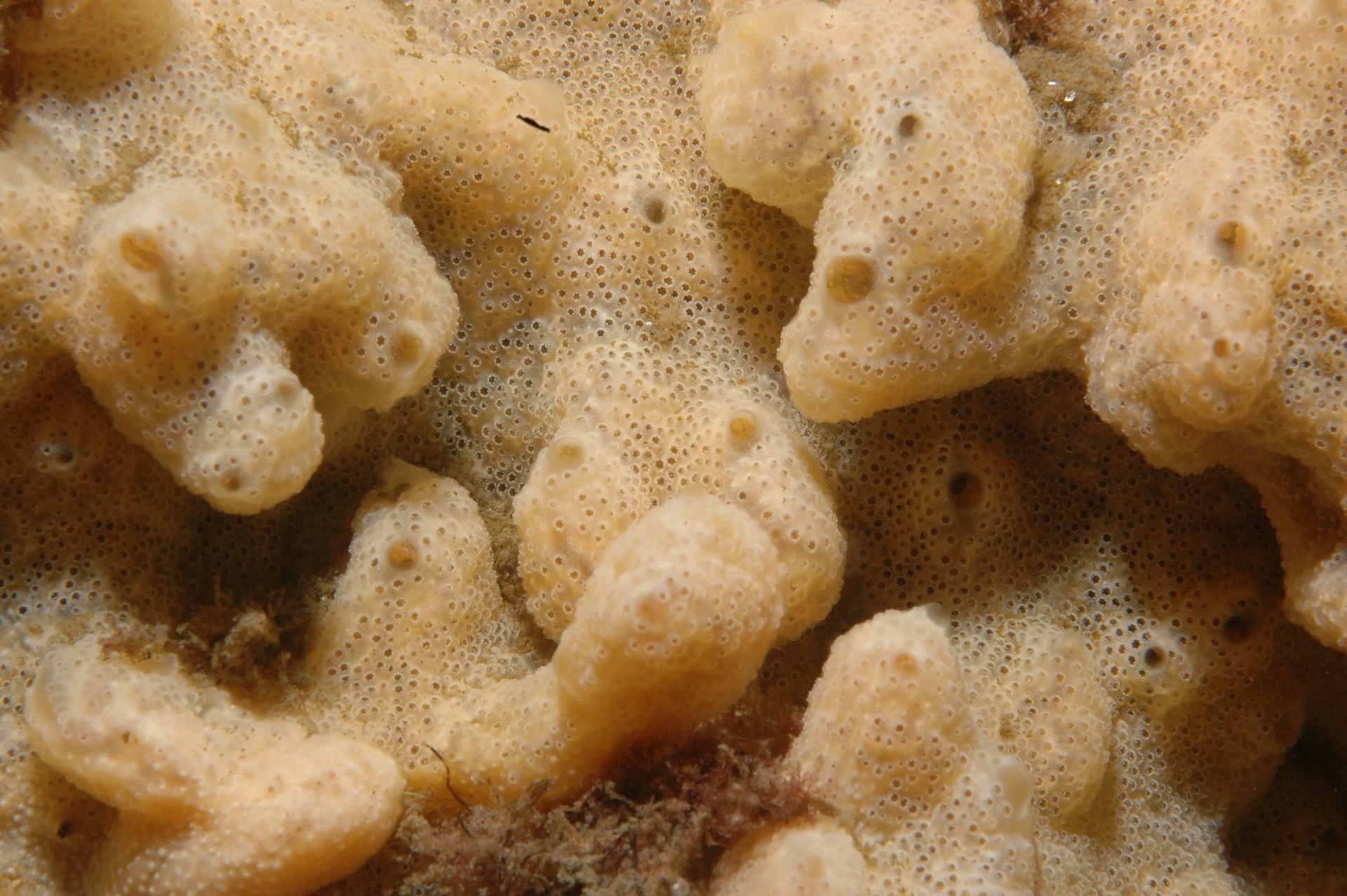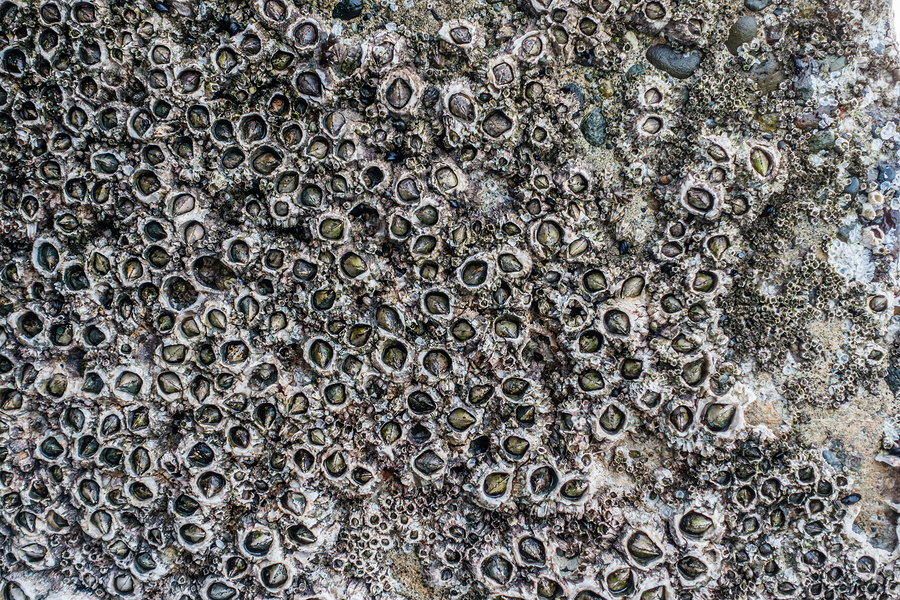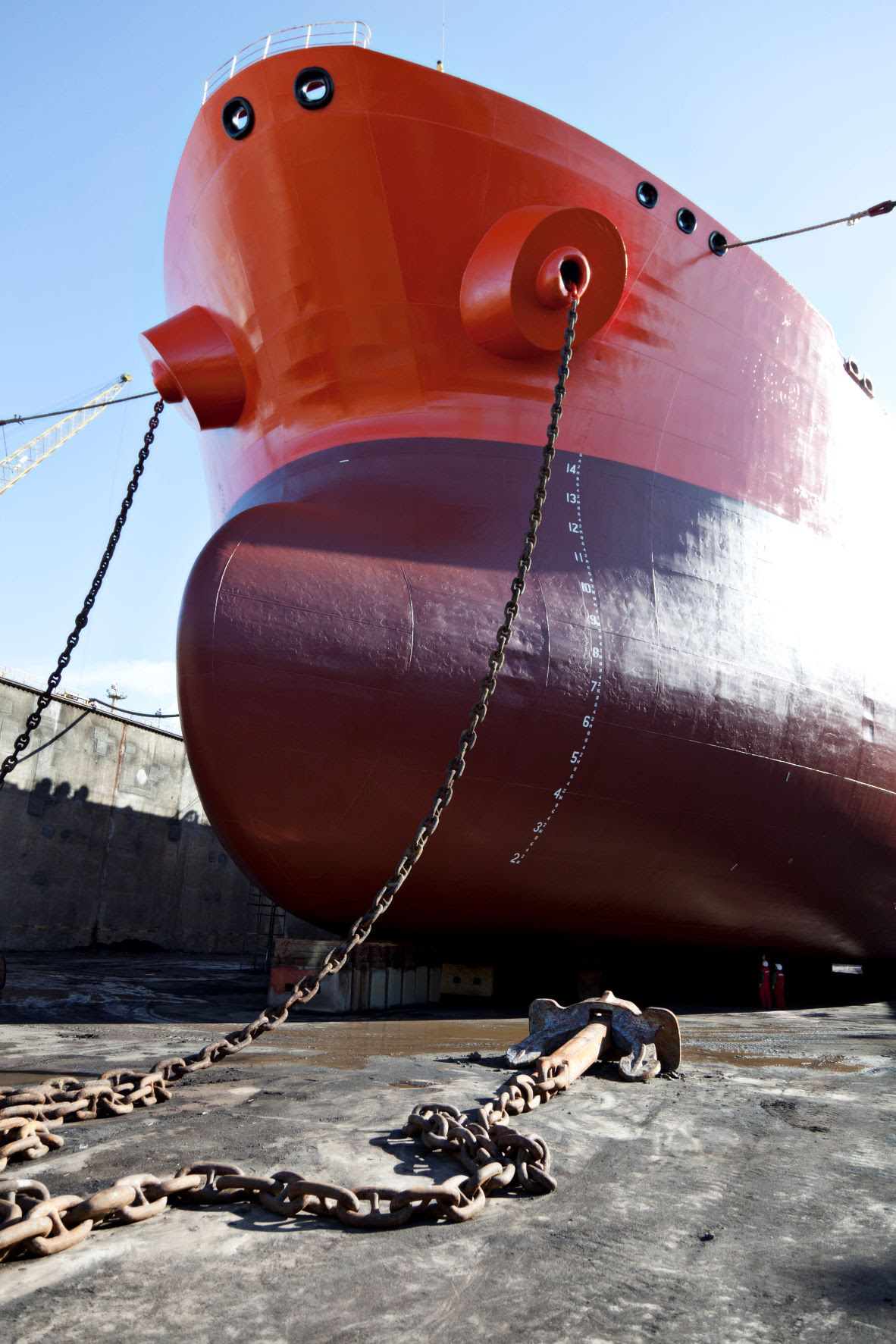The carbon intensity indicator rating kicks in as research reveals biofouling will impact fuel efficiency far more than previously thought
The Carbon Intensity Indicator rating, the all-new official A-to-E scale of a ship’s efficiency, is causing consternation around the world. It offers charterers a way to be more selective on tonnage choice, gives authorities a chance to ban poor performing (polluting) vessels from their coastal fleets, and will drive owners of poor performing vessels (those with an E-rating or two years of a D-rating) to take corrective action to make them less fuel guzzling and therefore emit less CO2.
And in an odd twist, it may help reduce the risk of invasive species, providing vessel operators can get to clean their ships. Some ports are banning hull cleaning in their waters, raising questions about increased risks, and increased emissions.
Research has shown that fouled hulls are a serious cause of fuel consumption increases. A new guide by the International Maritime Organization has said fuel consumption can increase by more than 20% as ships’ hulls get fouled.
Ship’s tend to leave a dry dock with clean hulls, but over the course of the (usually) five year period between dockings, pick up fouling from slime to more serious fouling of barnacles, weed and other marine flora and fauna.
Fouled hulls create water drag, thus requiring more engine power to maintain an expected speed, thus the increase in emissions, and this fouling can also be a significant environmental risk, spreading invasive species around the world, with experts suggesting the problem is just as bad as that posed by invasive species in ballast water. In short, biofouling contributes to two of the major tsunamis facing the planet, the climate crisis and biodiversity collapse.
Hull coatings makers have complex coating solutions to reduce the build-up of fouling, but evidence suggests that these coating systems may sometimes be unable to deal with operational changes (speed, route, geographical) of a vessel leading to fouling. Additionally, according to a delegate from a coating maker at the recent GLOfouling R&D Forum, coating life cycles are influenced by poor application in the drydock.
The data to kill for
The IMO’s Glofouling Conference at its headquarters in London brought together marine scientists, technology experts, policy people and one or two ship owner and operator representatives. The latter were in short number, possibly as they do not yet understand how changes to biofouling guidelines and the CII may impact them.
Martin Koepke, sustainability officer at container liner operator Hapag Lloyd believes that vessels could sink from B to D in the CII rating if its vessels are allowed to develop fouled hulls. They have done the number crunching to find this out.
“We have had a lot of this discussions with our charter owners for premium paints, for premium drydock treatments, meaning a full blast rather than a spot blast, and we can measure the difference, he said on the fringes of the recent IMO Glofouling R&D summit in London he was attending.
He pointed to the data over the five years between dockings of vessels “There is fouling, there is degradation on the paint, and we can measure the difference and it’s 20- 30% in consumptions. This is evident out of the numbers we have from 250 ships which we operate. We see those on a daily basis. This is a sophisticated task to analyse, but we’ve done our homework.”
For some owners that are not operators this could become a huge problem. Charter agreements between owners and chatterers (operators taking vessels on a time charter or voyage charter for example) result in the charterer often paying the fuel costs, while finding they are unable to get a hull cleaned due to the charter conditions. But now under the CII rating those vessels may drop down in the rating scheme and become les attractive for charter.
Is this an incentive for owners to take hull cleaning more seriously?
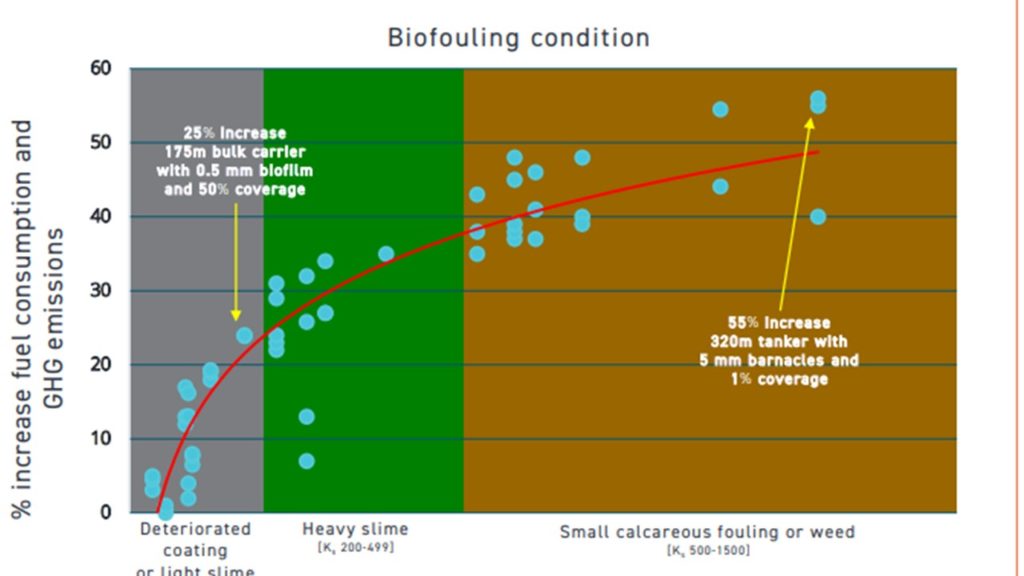
To clean or not to clean? Or where to clean when to clean?
But therein lies another problem. Traditional cleaning has been done with divers spending hours, if not days, scrubbing fouled hulls, propellers and rudders, as well as cleaning out niche spaces such as thrusters and sea chests (the water inlets for the engine room which can easily get clogged and create problems for engines).
Scrubbing a hull this way is dangerous, divers have died, and also lets all the detritus removed fall to the seabed. Cleaning could be done at a sheltered anchorage or alongside, but now some ports and maritime authorities are alarmed by the invasive species risks and are beginning to ban hull cleaning.
One of the policy problems that is arising is the potential for an increasing number of ports and maritime administration to become restrictive and not allow cleaning, of any sort.
In response
In response to the risks posed to divers a handful of companies have emerged in the last 15 years offering robotic cleaning, notably remote cleaning without anyone in the water.
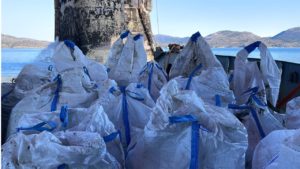
The response to the invasive species risk is that some companies say they can collect the collected detritus, filter it out and dispose of it ashore.
However there are no hard and fast, impartial ways to prove that these systems have the ability to collect all the detritus, and to filter it sufficiently.
Hull cleaning tends also to remove some of the hull coating as well as the fouling, this includes plastics and metals that are part of the coating make up and could also fall into the harbour water, adding to pollution risks.
This has posed challenges for ports, however some jurisdictions have a closed door policy, banning any form of cleaning, and even banning heavily fouled ships form entering their waters, while others have yet to develop their policies.
One that has is the Port of Antwerp-Bruges, which with other Flemish ports has a strategy that includes making companies that wish to offer cleaning services prove they can clean and collect 90% of the fouling of a hull.
Policy officer at the port of Antwerp-Bruge Luc Van Espen said the ports insist that hull cleaning companies put their robot cleaning system through a laboratory test and then an in situ test before they are permitted to offer services. Two companies currently have permits – ECOsubsea and Fleetcleaner, and a third is seeking a permit.
The port has seen a significant increase in cleaning requests from visiting vessels during the latter half of this year according to van Espen, with less than 50 vessels per year in the three years up to the end of 2021, but over 80 in just the first none months of 2022, notably in the summer.
Van Espen said it would help both ports and shipping companies if a common approach to cleaning could be adapted. He welcomes the revision of the IMO guidelines, but says they may need to be some But therein lies another problem. Traditional cleaning has been done with divers spending hours, if not days, scrubbing fouled hulls, propellers and rudders, as well as cleaning out niche spaces such as thrusters and sea chests (the water inlets for the engine room which can easily get clogged and create problems for engines).
Scrubbing a hull this way is dangerous, divers have died, and also lets all the detritus removed fall to the seabed. Cleaning could be done at a sheltered anchorage or alongside, but now some ports and maritime authorities are alarmed by the invasive species risks and are beginning to ban hull cleaning.
One of the policy problems that is arising is the potential for an increasing number of ports and maritime administration to become restrictive and not allow cleaning, of any sort.
New guidance?
The IMO guidelines on biofouling came out in 2011. They have largely been ignored, but given the rising concern over biodiversity risk of invasive species are being revised, with some calls for them to become, or lead to a mandatory instrument.
The guidelines revision is being conducted by a correspondence group made up of representatives form 25 member states, 14 NGOs and is set to report a final draft for the IMO’s sub-committee on Pollution Prevention and Response, before going to MEPC.
There are still unresolved issues around proactive and reactive cleaning, and with suggestions for required capture rates (how much of what is pulled off the hulls should be captured and filtered out).
During the IMO’s Glofouling R&D Forum there was an announcement from the Global Industry Alliance in support of in water cleaning with foul collection to prevent further spread of invasive risks due to the cleaning process.
While this was generally welcome, it was noted that the GIA members who offer cleaning services do so with collection, and largely for vessels that have significant fouling and not the slime or biofilm that can add even at that level of fouling a singe digit increase in fuel consumption.
The Clean Hull Initiative is driven by the Bellona Foundation in Norway and is promoting the concept of vessels having a continually clean hull, by constant proactive cleaning, or grooming.
Catch 22
So in short, ship owners could well find, from January 2023, they need to listen to charterers calls to be allowed to clean hulls, but may also now find it difficult to get hulls cleaned as ports and authorities have found it easy to shut their doors to cleaning.
Those that have a policy of offering cleaning services to shipping will be aware of the bio-risks and be searching for hull cleaning technologies, providing those companies demonstrate they can collect what is cleaned of the hull.
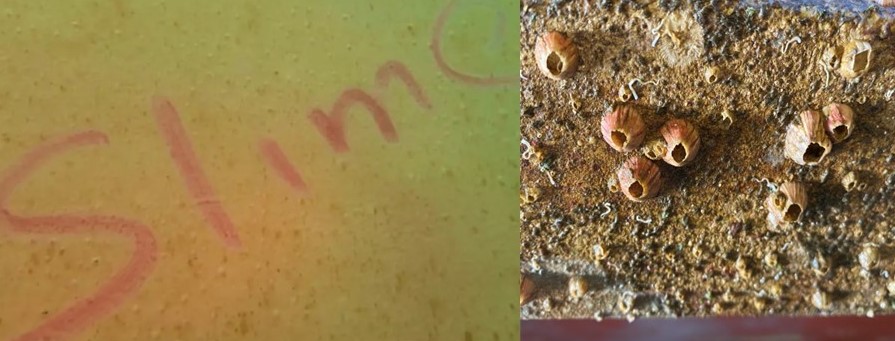
Slightly fouled hulls can also lead to poor fuel performance, and some operators will also now be looking to keep hulls clean rather than to clean ones that are heavily fouled .
This hull care approach calls for proactive cleaning, where only a bio slime is removed, and here there is a difference of opinion regarding the collection of this, with some, even Bellona, a Norwegian environmental group, saying that this not necessarily an invasive species but can create a significant impact on fuel performance.
This puts shipping in between a rock and hard place, stuck between charter requirements, ports with different cleaning policies, and a potential difference of opinion between proactive and reactive cleaning.
Watch this hull.























